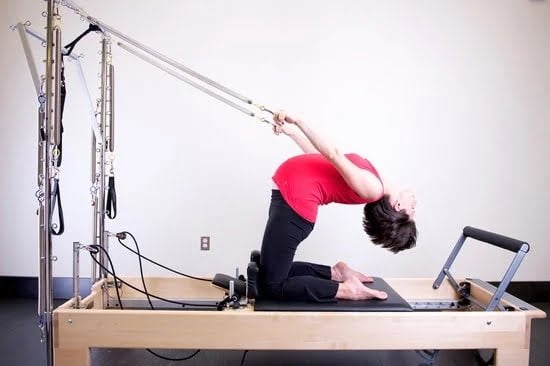Soccer is a sport that demands a high level of physical fitness in order to perform at a top level. A good fitness routine for soccer is essential for players to excel on the field, as it not only improves their physical performance but also reduces the risk of injuries.
In this article, we will delve into the various components of a comprehensive fitness routine tailored specifically for soccer players. From pre-season preparation to injury prevention and recovery, every aspect of a well-rounded fitness program will be explored to help athletes achieve success on the pitch.
When it comes to soccer, having optimal fitness is crucial for enduring the rigors of the game. From running long distances chasing the ball, to sprinting at full speed and making quick changes in direction, soccer players need to possess exceptional endurance, strength, agility, and speed. This makes it important for them to undergo specific training programs aimed at improving these aspects of their physical capabilities.
In addition to physical performance enhancement, a good fitness routine for soccer should also prioritize injury prevention and recovery. Incorporating mobility and flexibility exercises into the training regimen can help reduce the risk of common soccer-related injuries such as muscle strains and ligament tears.
Proper rest and nutrition are equally important in allowing the body to recover and repair itself after intense training sessions or matches. By understanding the significance of fitness in soccer and implementing a well-rounded routine, players can elevate their game and stay ahead of their opponents.
Pre-Season Preparation
As the soccer season approaches, it is crucial for players to focus on building a strong foundation of fitness to prepare their bodies for the physical demands of the sport. A good fitness routine for soccer should include a combination of endurance, strength, agility, and flexibility training to ensure that players are in peak condition when it’s time to hit the field.
To kickstart pre-season preparation, players should consider incorporating the following workouts into their training regimen:
1. Endurance Training: Long-distance running, interval sprints, and high-intensity aerobic exercises are essential for improving cardiovascular health and stamina on the field. These exercises help players maintain energy levels throughout matches and withstand the demands of a full game.
2. Strength Training: Incorporating resistance exercises such as squats, lunges, deadlifts, and plyometric drills can help develop power and explosiveness in soccer players. Strengthening key muscle groups like the quads, hamstrings, glutes, and core is essential for executing powerful kicks, explosive sprints, and agile movements on the field.
3. Agility and Speed Workouts: Implementing ladder drills, cone drills, shuttle runs, and reaction drills can enhance quickness and improve change of direction on the field. These workouts help players increase their foot speed, coordination, and overall agility-a crucial aspect of soccer performance.
By focusing on these foundational components of fitness during pre-season preparation, soccer players can set themselves up for success once the season begins. Incorporating a combination of endurance training, strength exercises, agility workouts-along with proper rest and recovery-will ensure that players are ready to perform at their best when game day arrives.
Endurance Training
Types of Endurance Training
There are various types of endurance training that can benefit soccer players, including long-distance running, interval training, and fartlek workouts. Long-distance running helps to build overall endurance and can be done through steady-paced runs over longer distances. Interval training involves alternating between periods of high-intensity effort and lower intensity recovery, helping to improve both aerobic and anaerobic endurance. Fartlek workouts incorporate varying speeds and terrains to simulate the unpredictable nature of soccer game play.
Benefits for Soccer Players
By incorporating endurance training into their fitness routine, soccer players can experience a multitude of benefits. Improved cardiovascular health means better circulation and oxygen delivery to working muscles, allowing players to sustain high levels of activity without experiencing fatigue as quickly. Additionally, increased stamina enables players to maintain their performance during the later stages of a match when fatigue often sets in for those who have not trained their endurance effectively.
Sample Endurance Workouts
An example of an effective endurance workout for soccer players could include a combination of long-distance runs (e.g. 3-5 miles), interval sprints on the field or treadmill, and agility drills with short recovery periods in between.
Varying the intensity and duration of these workouts will help simulate the demands of an actual soccer match while progressively improving cardiovascular health and stamina over time. Incorporating different forms of endurance training into a player’s fitness routine can lead to noticeable improvements in overall physical performance on the field.
Strength Training
Importance of Strength Training
In soccer, strength is a key component of success on the field. A good fitness routine for soccer should include strength training to help players develop power and explosiveness in their movements. This type of training not only improves a player’s ability to win physical battles on the field but also contributes to overall performance, such as shooting power and speed.
Exercises for Power and Explosiveness
A well-rounded strength training program for soccer should include exercises that target major muscle groups used in the sport, such as legs, core, and upper body. Squats, lunges, deadlifts, and plyometric exercises are essential for building lower body strength and explosive movements. Additionally, incorporating exercises like medicine ball throws and kettlebell swings can help improve upper body power, which is important for shielding opponents and winning aerial duels.
Frequency and Progression
To see results from strength training, consistency is key. Players should aim to incorporate strength workouts into their overall training routine at least 2-3 times per week. As they progress in their fitness journey, increasing the intensity or adding more challenging variations of exercises can help continue building strength and explosiveness. It’s important to work with a qualified coach or trainer to ensure proper form and technique to minimize the risk of injury during these workouts.
By implementing a well-designed strength training program into their overall fitness routine for soccer, players can improve their physical attributes that are crucial for success on the field.
Agility and Speed Workouts
Agility and speed are crucial components of a good fitness routine for soccer. These workouts not only help enhance a player’s quickness and change of direction on the field but also contribute to overall performance during a match. Here are some effective agility and speed workouts that can be incorporated into a soccer fitness routine:
1. Cone Drills: Set up cones in various patterns and distances to simulate different movements on the field. This can include zig-zag runs, shuttle runs, and T-drills. Practice quick changes in direction and acceleration to improve agility.
2. Ladder Drills: Utilize an agility ladder to perform quick footwork drills such as high knees, lateral shuffles, and crossover steps. Ladder drills help improve foot speed, coordination, and agility.
3. Plyometric Exercises: Incorporate plyometric exercises like box jumps, bounding, and depth jumps to develop explosive power in leg muscles. These exercises help improve fast twitch muscle fibers which are essential for quick movements on the soccer field.
4. Sprints: High-intensity interval training with sprints can improve both speed and cardiovascular endurance. Include short sprints with brief rest periods to mimic the stop-and-go nature of a soccer match.
5. Reaction Drills: Use visual or auditory cues to practice quick reaction times and decision-making skills on the field. These drills can include partner-based activities or specialized equipment designed for reaction training.
By incorporating these agility and speed workouts into a comprehensive fitness routine for soccer, players can significantly enhance their quickness, change of direction, and overall performance during matches. It is important to regularly incorporate these workouts into training sessions to continually improve speed and agility on the field, ultimately contributing to the success of the team as a whole.
Core Training
Improving balance and stability is crucial for soccer players, as it can help them maintain control while making quick movements on the field. Core training plays a key role in enhancing these attributes, as the core muscles are responsible for providing stability and support during dynamic movements. A strong core not only improves balance but also reduces the risk of injury during play.
Incorporating exercises that target the abdominal muscles, obliques, lower back, and hips is essential for developing a strong and stable core. This can be achieved through various workouts such as planks, Russian twists, side bends, and leg raises. These exercises help build strength in the core and improve overall stability, which is beneficial for performing quick turns, maintaining body control when changing directions, and shielding the ball from opponents.
Moreover, an effective core training routine should focus on functional movements that mimic the actions performed during a soccer game. This includes exercises that challenge balance and coordination, such as single-leg deadlifts, stability ball exercises, and standing cable rotations. By incorporating these workouts into a good fitness routine for soccer players, they can significantly enhance their on-field performance while reducing the risk of getting sidelined due to injuries.
| Benefits of Core Training | Examples of Core Exercises |
|---|---|
| Enhanced balance and stability | Planks |
| Improved body control during quick movements | Russian twists |
| Reduced risk of injury | Single-leg deadlifts |
By prioritizing core training as part of a comprehensive fitness routine for soccer success, players can develop the physical attributes necessary to excel on the field. Moreover, this focus on improving balance and stability will not only enhance individual performance but also contribute to overall team success. Strengthening the core is an integral component of a good fitness routine for soccer that should not be overlooked by any serious player looking to elevate their game.
Injury Prevention
Incorporating mobility and flexibility exercises into a good fitness routine for soccer is crucial for preventing injuries and maintaining overall physical health. Soccer players are constantly moving in various directions, often at high speeds, which puts a significant amount of stress on their muscles and joints. Without proper mobility and flexibility, players are more susceptible to strains, sprains, and other injuries that can keep them off the field.
Mobility exercises focus on improving the range of motion in the joints, allowing players to move more freely and efficiently during a match. These exercises often involve dynamic movements that mimic the actions performed during soccer games, such as lunges, leg swings, and hip rotations.
Flexibility exercises, on the other hand, focus on stretching the muscles to improve their elasticity and reduce the risk of injury. Static stretches targeting major muscle groups like the hamstrings, quadriceps, and calves can help soccer players maintain optimal flexibility.
It’s important for soccer players to incorporate mobility and flexibility exercises into their regular training regimen to ensure that they are adequately prepared for the physical demands of the sport. By improving joint mobility and muscle flexibility, players can enhance their performance on the field while reducing the likelihood of sustaining common soccer-related injuries.
| Mobility Exercise | Flexibility Exercise |
|---|---|
| Lunges | Hamstring Stretch |
| Leg Swings | Quadriceps Stretch |
| Hip Rotations | Calf Stretch |
Recovery and Rest
In order to excel in soccer, it is crucial for players to not only focus on their training and workouts but also on recovery and rest. Recovery plays a significant role in allowing the body to repair and rebuild muscle after intense training sessions or matches. Similarly, proper nutrition is essential for replenishing energy stores, repairing muscle tissue, and promoting overall well-being.
After a rigorous training session or game, the body needs time to recover in order to perform at its best. This is where rest comes into play. Getting an adequate amount of sleep is paramount for proper recovery as it allows the body to repair muscle tissue, regulate hormones, and restore energy levels. Without sufficient rest, athletes may experience fatigue, decreased performance, and increased risk of injury.
In addition to rest, nutrition plays a vital role in the recovery process for soccer players. Consuming a well-balanced diet that includes lean proteins, complex carbohydrates, healthy fats, and plenty of fruits and vegetables can aid in muscle repair and replenishment of energy stores.
It is important for players to stay hydrated by drinking plenty of water throughout the day as well as consuming electrolyte-rich beverages during intense training sessions or matches. By implementing proper rest and nutrition into their routine, soccer players can optimize their recovery process and enhance their overall performance on the field.
Conclusion
In conclusion, a well-rounded fitness routine is crucial for soccer success. By understanding the importance of fitness in soccer and following a pre-season preparation plan, players can build a solid foundation for their endurance, strength, agility, and core stability. Endurance training is essential for improving cardiovascular health and stamina, while strength training helps develop power and explosiveness on the field.
Agility and speed workouts are also important for enhancing quickness and changing direction rapidly during games. Incorporating core training into a fitness routine improves balance and stability, reducing the risk of injury on the field. Additionally, prioritizing injury prevention through mobility and flexibility exercises can help players stay healthy throughout the season.
Finally, recovery and rest are vital components of a good fitness routine for soccer. Proper rest and nutrition allow players to recover from intense training sessions, ensuring that they can perform at their best during games. By implementing all these aspects into their fitness routine, soccer players can maximize their potential on the field and achieve success in their game.
Frequently Asked Questions
How Can I Improve My Soccer Fitness?
Improving soccer fitness requires a combination of aerobic and anaerobic exercises. This includes activities like running, sprinting, agility drills, strength training, and endurance exercises. It’s essential to work on cardiovascular fitness, muscular strength, power, and agility to improve overall soccer performance.
How Should a Soccer Player Be Working Out?
Soccer players should focus on a well-rounded workout routine that includes cardio, strength training, and flexibility exercises. Cardio workouts can include running or interval training to improve stamina. Strength training should focus on lower body strength for explosive movements like kicking and sprinting. Flexibility exercises can help prevent injuries and improve overall agility on the field.
How to Get Fit in a Week for Soccer?
Getting fit in a week for soccer requires dedication and focus on intense workouts. To improve fitness in a short period, it’s important to prioritize high-intensity interval training (HIIT) sessions that include bursts of intense exercise followed by short rest periods.
Additionally, focusing on proper nutrition and hydration is crucial for quick improvements in fitness level before a soccer game or event.

Passionate about providing useful information to anyone with an interest in the field of Personal Training, I strive to pass on to our readers quality information and to answer any questions about Personal Trainers, the work they do and how to become one.





